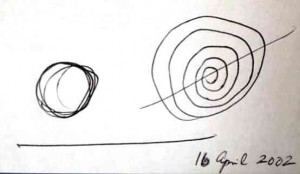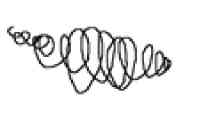
At the start of his classic work, “The Lion, the Witch and the Wardrobe,” C. S. Lewis writes this dedication to his goddaughter, Lucy: “My Dear Lucy, I wrote this story for you, but when I began it I had not realized that girls grow quicker than books. As a result you are already too old for fairy tales… But some day you will be old enough to start reading fairy tales again.”
Some day we “will be old enough to start reading fairy tales again.” Since I first came across this line in early college, I was always fascinated by it. It became somewhat of a hidden desire in me to “be old enough to start reading fairy tales again.”
Children have a way of entering a story—either a fairy tale they are reading, a movie they are watching, or a story they are telling. Children are so caught up in a story that it seems to come to life so much more to them, and through them to us.
This, I suppose, is due to the childlike focus they have; a focus without too many biases, thus less distracted by fears and hang-ups. Putting it simply, they’re less jaded. Ah, the bliss of innocence!
This, it seems, is one of the main themes in this Sunday’s readings—the familiar story of Christ walking on water and Peter doing the same, yet starting to sink as he allows doubt to set in (Matthew 14: 22-33). We begin to doubt when we become jaded—battle-scarred, so to speak, by life’s many tests and trials, the twists and turns in the journey.
One of the lessons learned in my own journey is when moments of doubt set in, no matter how difficult and at times painful, one must step back and regain perspective so that we may continue the journey. For some this is called centering, others refer to it as focusing.
Whispering
The first reading from 1 Kings 19: 9a, 11-13a beautifully dramatizes this. “Then the Lord said to him (Elijah), ‘Go outside and stand on the mountain before the Lord; the Lord will be passing by.’ A strong and heavy wind was rending the mountains and crushing rocks before the Lord—but the Lord was not in the wind. After the wind, there was an earthquake—but the Lord was not in the earthquake. After the earthquake there was fire—but the Lord was not in the fire. After the fire there was a tiny whispering sound. When he heard this, Elijah hid his face in his cloak and went and stood at the entrance of the cave.”
Exactly a month ago we reflected on this: “Be still and know that I am God.” (Psalm 46: 10) In the midst of turmoil and doubt, “the noise and haste,” the pain and the suffering, we are asked to trust that it is in “a tiny whispering sound” in the midst of such upheavals in our journey that we will find our center, our focus—God.

understanding of the journey, created around 5 years after I first ‘publicly’ articulated it to Rico.
Almost two weeks ago, I gave a recollection to a class of 25 classmates, most of whom were turning 70 this year. One of the exercises I gave was creating their life line.
One of them came up with a drawing of a spiral. She seemed tentative about it at the start, but then she said that it was how she saw her life line.
The same conclusion was reached by one of the teachers of a school in Malibay, Pasay that I gave a seminar to. She asked if formation then was a spiral movement. Our discussion became so engaged that I had to pull out a power point slide (Figure 1).
This drawing I found around a year after I drew it. The date and year were correct, but I made a mistake in the month. It was 16 March 2002, two days after the birthday and 13 days before the birth into eternal life of Rico Yan.
This was the night Rico told me that he wanted me to mentor him as he was ready to live out God’s mission for him. Out came the mini-pad paper I always carried in my back pocket and then I drew these lines, as my late spiritual director, Fr. Benny Calpotura, S.J., told me as I started my own journey as a seminarian 31 years ago.
Formation, directing or re-directing all our desires and passions towards God’s mission for us is not a linear movement, jumping from one point to another; neither is it a circular movement, same points over and over again, but going around in circles, i.e., not getting anywhere.
Formation is a spiral movement, the same points—concerns, issues and patterns in our life and person—occurring over and over again, but with each cycle there is a growing integration, deepening, healing and coming to wholeness.
Figure 2 is a development of my own understanding of the journey around five years after I first “publicly” articulated it to Rico.
Destiny
We come into this world whole and integrated, with a DNA of mission or destiny, what Parker Palmer refers to as our birthright gifts. Yet, as Palmer continues, we spend the first half of our life unraveling, disintegrating, losing our integrity of mission, destiny or purpose.
Then we ask the question, “Is the life I am living the same life that wants to live in me?” This is the life that Peter heard when Christ first called him to follow him and be his disciple. This is the life that Peter heard in this Sunday’s Gospel when Christ told him, “Come.”
This is the same life that wants to live in us, constantly hearing the invitation, “Come.” We seem to lose it, especially when we allow doubts to set in. But it is there.
In our journey, as in Peter’s, we go through the spiral movement of hearing it, then letting the doubts drown the call, hearing it again, etc. Yes, we learn to live with it. But at a certain point we do ask if this is the kind of life that wants to live in us.
Then Palmer’s next question comes, “So how do I get back?”
We journey back to wholeness. We reintegrate. We redirect everything in our life, as in everything, to journey back to the wholeness who is Christ.
One of the Assumption sisters in the Malibay seminar brought this up—Christ as the integration point—as we were talking about the spiral movement of formation. The discussion led to the famous Omega Point of Fr. Pierre Teilhard de Chardin, S.J.
All of creation, all of the moments and experiences in our life evolve—and I picture it to be a spiral movement—towards the Omega Point, Christ himself. This cosmic movement and force can come in a simple moment in our life when we hear Christ saying to us, “Come,” when we stand at the entrance of the cave after we hear “a tiny whisper.”
Such moments are the moments in our life when we are “old enough to start reading fairy tales again” and believe in the story and its magic. It’s the story of a God who loves us so unconditionally that we cannot understand this love. The only way we will, perhaps, is to respond to his invitation to “come” and walk on water.
An epilogue of sorts. When I started writing “my fairy tale,” I wrote it for my students 30 plus years ago, then my second batch of students almost 20 years ago. Yes, they grew faster than I could write my story, and along the way I allowed others to write it for me and allowed doubt to cloud the story.
But now, meeting new students, I am inspired to reclaim my story and resume writing it for all my students who, from the start of “my fairy tale,” I had wanted to love into excellence—that they may integrate and be whole, discover their mission and become loving persons.
I am in the final stage, the final chapter of the story. And this is where I will write about loving with the one great love. “Come”—and if we respond and focus, we will walk on water. This is how great this love is, and will always be.













































